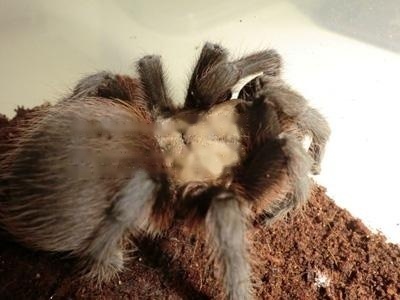
Texas Brown Tarantula
Adult body length is 13-14 cm, suitable temperature is 28-30 ℃, and suitable humidity is 65%. It is recommended to use moist peat, coconut brick and clay as the substrate. It tak
English name:Mexico Red-knee tarantula
Mexican red-knee tarantula (scientific name: Brachypelma smithi) Spiders order tarantulas. The body is medium to large, covered with down and bright and beautiful in color; its temperament is docile, so it is suitable for artificial breeding. Daily hi to hide in cool holes to perch. They are relatively rare in Mexico, so they are listed as protected species in Appendix II of the Washington Convention (CITES).
Chinese name: Mexican red-knee tarantula
Latin name: Brachypelma smithi
Alternative name: Mexican red-knee spider
Kingdom: Animalia
Department: Arthropoda
Subphylum: Mandibular
Class: Arachnida
Subclass: Stenobelia
Order: Arachnids
Suborder : Protoarachnids
Family: Tarantidae
Subfamily: theraphosinae
Genus : Brachyuridae
Species: Mexican red-knee tarantula
Distribution area: Native to Mexico Desert area on the west coast
English name: Mexican Red Kneed Tarantula
Reproduction: Oviparous
The adult body length is about 12-16cm, the male is slightly smaller than the female, and the weight is 15-16g. The overall appearance is stout and large. This spider is covered with downy hairs, its head, legs Has red or orange fluff. Jaws stout and downy.
This species of tarantula is docile, slow-moving, and a ground-dwelling type that kicks hair Spider. They like to hide in dry, cool and dark burrows and grow slowly. The life cycle is very long and can live 10-25 years, with females living longer. Usually feed on insects and meat. Because males and females have similar body colors and docile temperaments, it is easy to mate, and cannibalism rarely occurs.
Mexican red-knee tarantulas are generally considered all pets the most attractive species of tarantulas. The beautiful appearance and docile character of the red knee are legendary, so they were brought to all parts of the world from Mexico and started to be cultivated.
Adult males look very similar to females. Their mating is relatively easy, but getting the eggs from the female spider is a little more difficult. Successful mating can be achieved in a simple sheltered rearing box. Their relatively difficult reproductive success is offset by the large populations they can produce from a single reproductive success. The larvae are very small and grey in color. They need a humid environment. Juvenile red-knee tarantulas eat so much during the molting week that it's just their growth strategy. So if you want the hatchlings to grow faster, even when they look like they're about to explode, give them plenty of food.